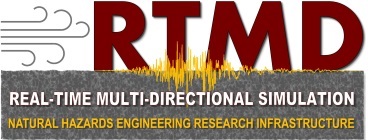Unbonded Post-Tensioned Cast-in-place Concrete Walls for Seismic Resistance (Shared Used)
Project Overview
The objective of this research grant is to attain test data to confirm and codify a design protocol for a new type of cast-in-place concrete shear wall system that incorporates vertical post- tensioned tendons. The objective is to deliver a complete design procedure ready to be employed on actual commercial building construction projects in all seismic zones. The defining feature of the hybrid wall system is the rocking/flexural response and self-centering capability provided by unbonded vertical post-tensioned tendons coupled with the energy dissipation provided by the reinforcing bars. The new system has the potential to significantly reduce the cost of building seismically safe concrete structures using currently available construction methods and materials. Structural engineers would use the final work product to design buildings for the ultimate benefit of the general public.
Researchers
Principal Investigator
- Stephen Pessiki – Lehigh University
Co-Principal Investigator
- Richard Sause – Lehigh University


